Subadult Grauer’s Gorilla ‘Busasa’ Released from Snare in Challenging Intervention
By Gorilla Doctors Staff on Sunday, July 27th, 2014 in Blog.By Dr. Eddy Kambale
On Saturday, July 19, Kahuzi Biega National Park rangers discovered Busasa, a 9-year-old male Grauer’s gorilla in Chimanuka group, had a wire snare wrapped around his left arm. At 9-years-old, Busasa is classified as a subadult gorilla and is one of Nabintu’s twins. His twin, who is also a male, is named Numbi.
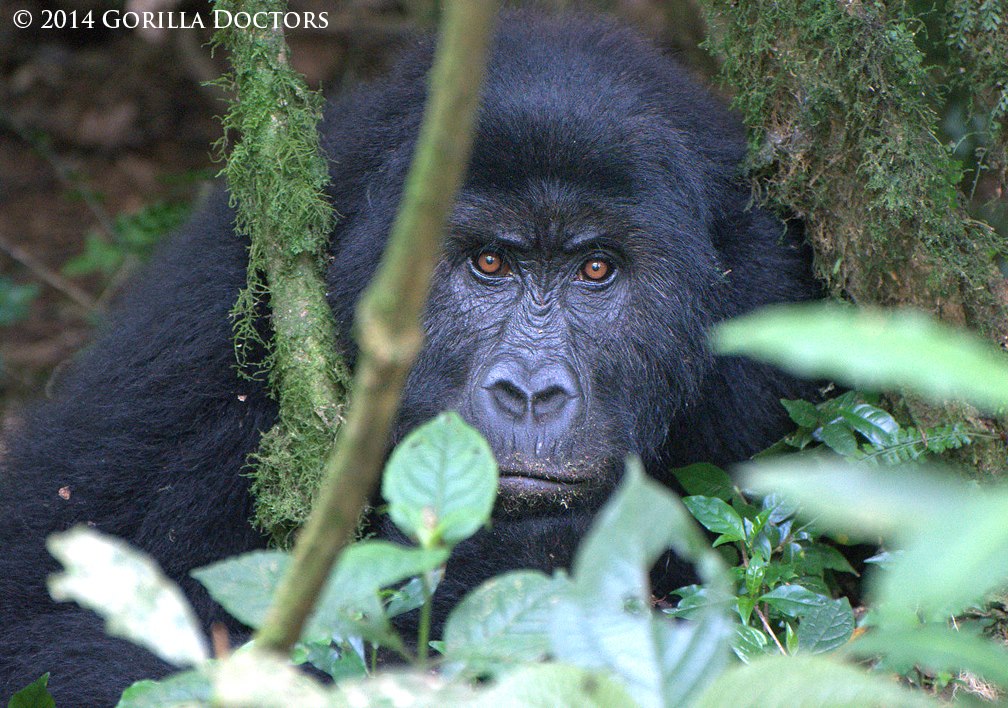 Busasa’s twin, Numbi.
Busasa’s twin, Numbi.
Immediately after the rangers spotted the snare, the group engaged in a series of interactions with an unhabituated group in the park, causing Busasa and his group members to flee the area. Despite many attempts by park rangers to locate Busasa, it wasn’t until Thursday, July 24 that he was found. The wire remained on the young male’s forearm and he was not using the left arm properly when moving, though he was observed using the arm to feed on Myrianthus fruits.
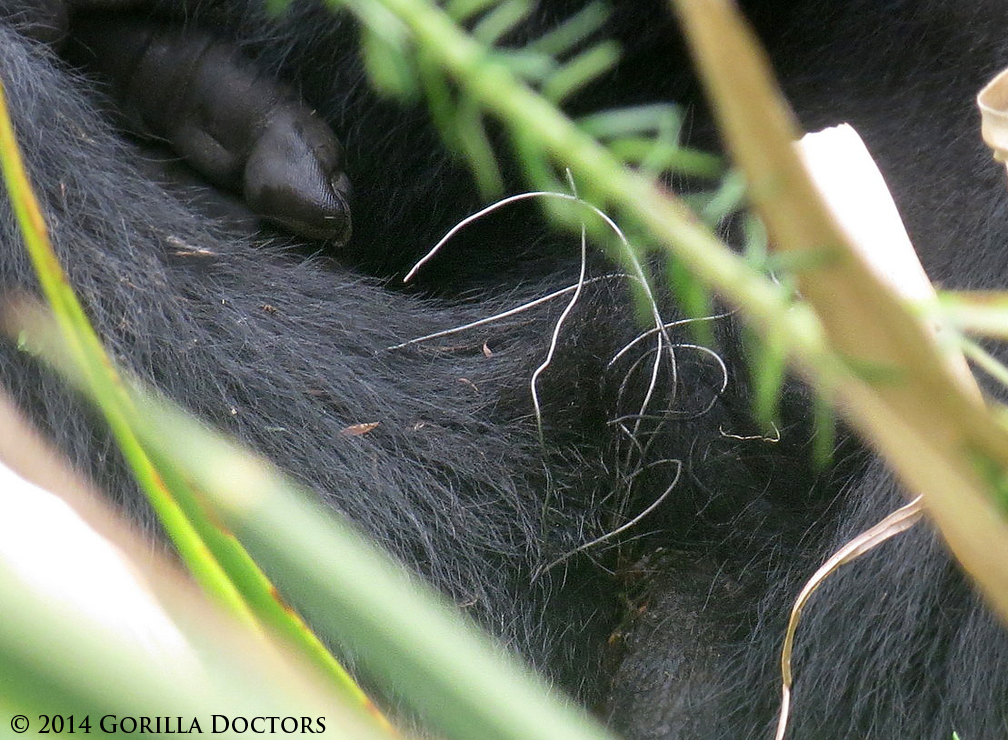 The wire snare wrapped around Busasa’s left forearm.
The wire snare wrapped around Busasa’s left forearm.
Once Busasa was found, Kahuzu Biega National Park director Radar Nishuli immediately contacted Gorilla Doctors to intervene. Gorilla Doctors co-Director, Dr. Mike Cranfield, Dr. Martin and I made the journey across Lake Kivu and on to the park, prepared for a full veterinary intervention. On the 25th, we joined a team of nine NKB rangers and the park’s veterinarian, Dr. Kizito, and hiked into the forest in the early morning with the intervention kits.
Our field team located the group at 10:30am in the Mwandagalo area of the park as they were feeding on fruit. Busasa was spotted up in a Myiranthus tree, but when we began to approach him to assess he condition, he moved quickly down, rejoining his group members before climbing up another tree. He was nervous and very aware of our presence, frequently running and hiding in the thick vegetation. When he would come out of hiding, he would sit close to the dominant silverback, Chimanuka, which made it all but impossible to dart Busasa with anesthesia to carry out the intervention. We waited for a good opportunity to dart and spent five hours with the group before deciding to try again the following day.
On Saturday, we located the group in the Mulinga area of the forest at 9:50am and again Busasa attempted to evade our team. Finally, at 12:41pm we were able to successfully dart Busasa with a combination of Ketamine and Dexmedetomidine to begin the intervention. Although Busasa was in close proximity to Chimanuka, the silverback was looking away and Busasa did not cry out, but moved into some thick vegetation to hide. We followed him slowly and after seven minutes, he was fully sedated.
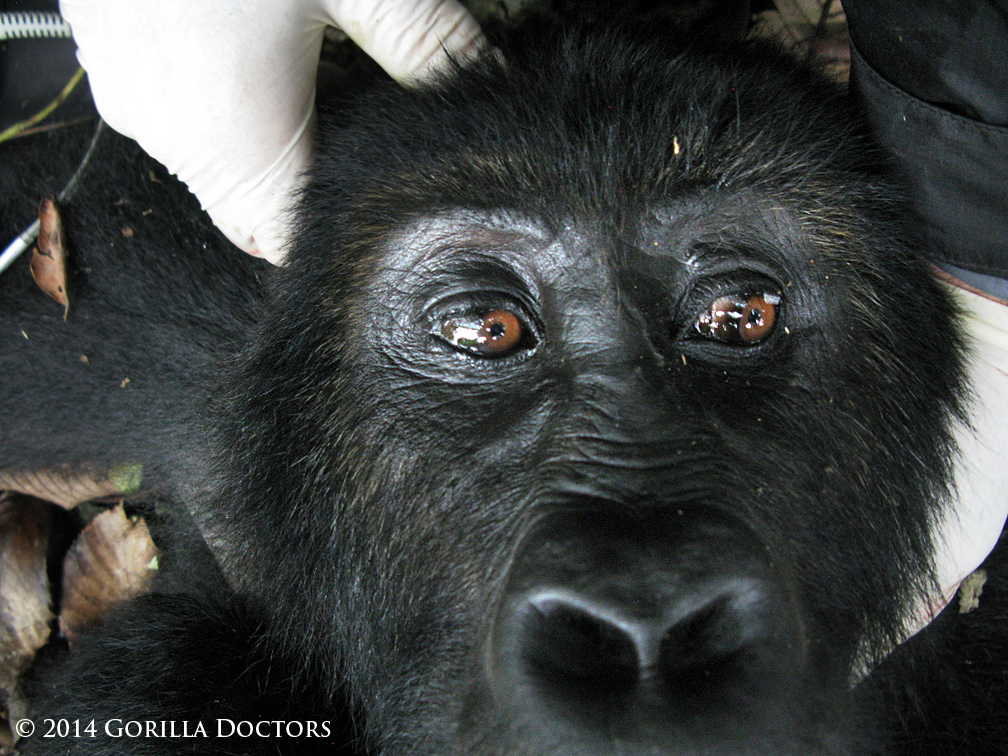 Subadult male Grauer’s gorilla Busasa in Chimanuka Group, Kahuzi Biega National Park, DRC.
Subadult male Grauer’s gorilla Busasa in Chimanuka Group, Kahuzi Biega National Park, DRC.
We immediately got to work cutting the wire snare off of his arm, cleaning his wound, conducting a physical examination, collecting blood and fecal samples and administering antibiotics and anti-inflammatory medications to speed the healing process.
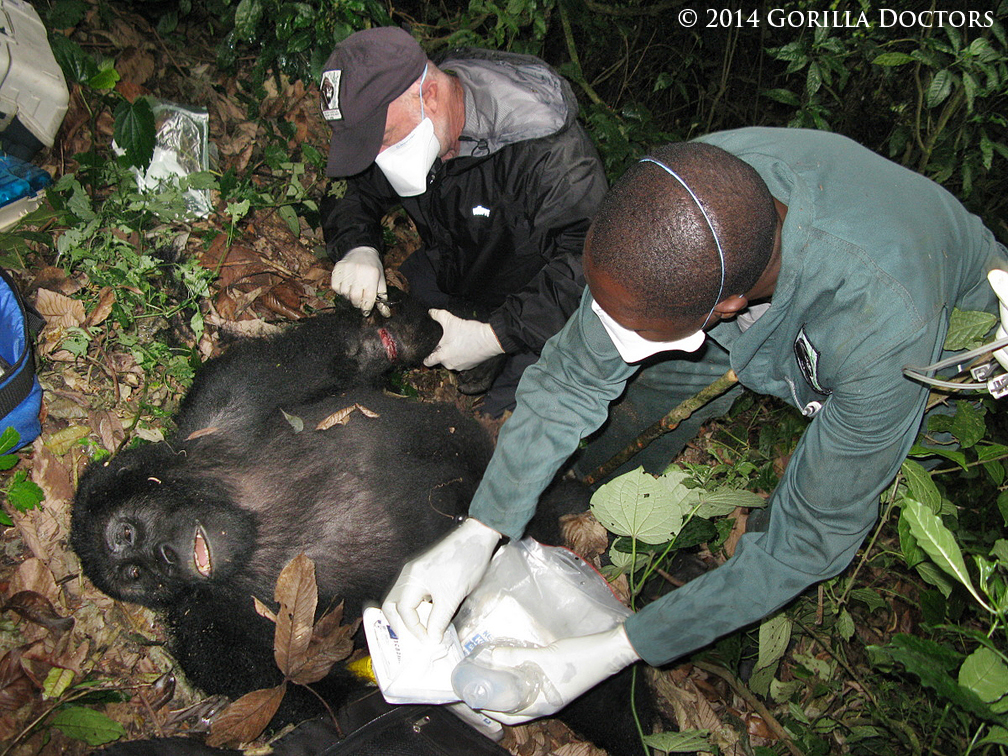 Drs. Mike and Eddy clean the wound caused by the wire snare.
Drs. Mike and Eddy clean the wound caused by the wire snare.
The wire snare was very tight around his forearm and had cut through the skin and superficial muscle of the anterior side of the arm. The wound was about 6 cm long, 2 cm wide, and 1.5 cm deep. The wire was embedded in the skin on the posterior side of the arm, but there was no open wound. The arm was slightly swollen, particularly his hand and fingers.
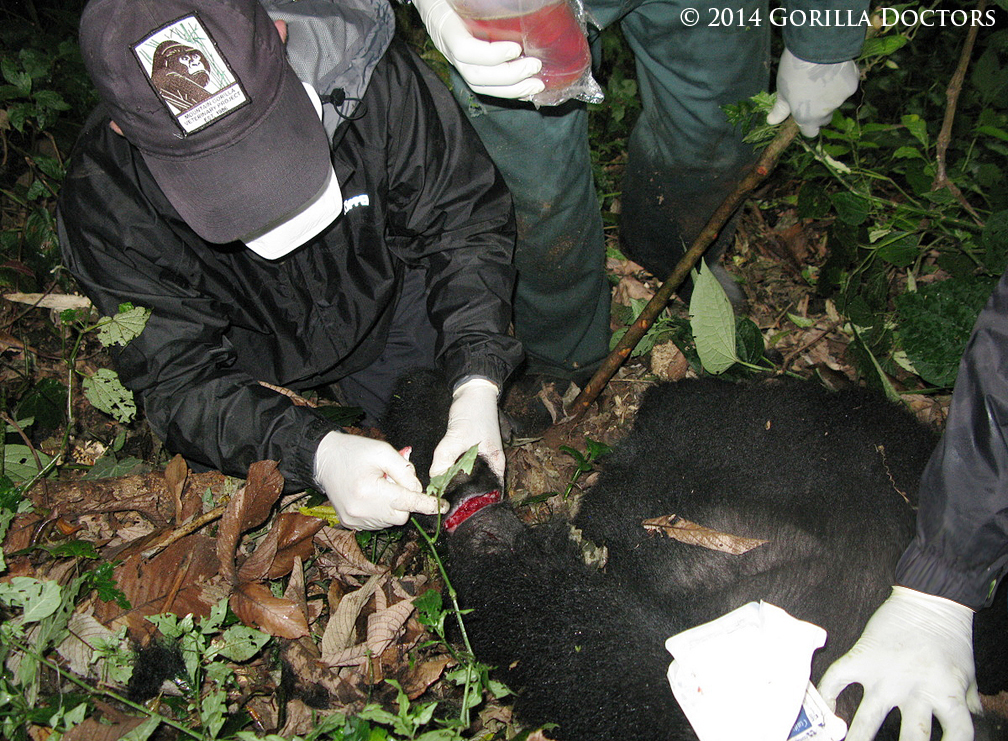 Busasa’s wound is treated while he is under anesthesia.
Busasa’s wound is treated while he is under anesthesia.
After 22 minutes under anesthesia, Busasa began to wake. Our work was complete, so we moved away from the young male to allow him time to recover. After 15 minutes, he rejoined his family and began feeding alongside his group members. Busasa will be closely monitored in the coming days to ensure he recovers fully from this snare incident.


 Donate
Donate
